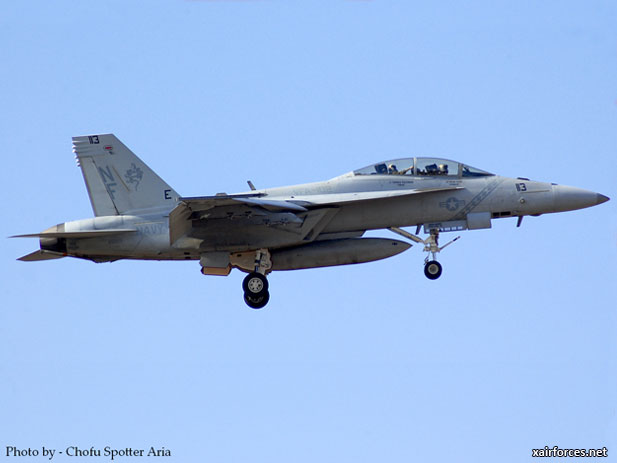
The US Navy Issues RFI for Boeing F/A-18E/F Super Hornet Successor

The US Navy has issued a Request for Information (RfI) for a new fighter to replace the Boeing F/A-18E/F Super Hornet and EA-18G Growler in the 2030s.
"The intent of this research is to solicit Industry inputs on candidate solutions for CVN [nuclear-powered aircraft carrier] based aircraft to provide air supremacy with a multi-role strike capability in an anti-access/area denied (A2AD) operational environment," the RfI reads. "Primary missions include, but are not limited to, air warfare (AW), strike warfare (STW), surface warfare (SUW), and close air support (CAS)."
But in addition persistent capability inside an enemy air defence system, the USN also wants the prospective aircraft to provide other capabilities found in existing strike fighters. These include organic air-to-air refueling, tactical reconnaissance, surveillance and target acquisition (RSTA), and airborne electronic attack (AEA).
However, the USN is not limiting itself to manned aircraft or to an entirely new jet.
"The trade space refinement activity will characterize a broad trade space, to include unmanned, optionally manned and manned aircraft," the document reads. "System attributes and system capabilities will be considered in the context of cost and affordability. Concepts that are derived from legacy aircraft, 'clean sheet' new design aircraft, as well as innovative technology concepts specifically tailored for the operational context are all relevant."
At a minimum, the aircraft should be able to operate from Nimitz and Ford-class carriers and should be a "complementary CVW [carrier air wing] asset to the F-35C and an unmanned persistent intelligence, surveillance, and reconnaissance (ISR) vehicle with precision strike capability."
The RfI sets a target initial operational capability (IOC) date of 2030 and will consider a prospective jet's capabilities, in addition to technical risks and total cost of ownership. "If a spiral approach to incorporation of systems and/or technology to achieve full operational capability is employed, provide the timeline to achieve full capability," the document reads.
But there is no programme just yet. "All we're looking for is information, says Rear Admiral Donald Gaddis, the Naval Air Systems Command's (NAVAIR) programme executive officer for tactical aviation. "This particular AoA [analysis of alternatives] is going to be a long one," he adds.
Source: Flightglobal DEW Line blog; posted April 17, 2012
Photo: The U.S. Navy Boeing F/A-18F Super Hornet (Photo by Chofu Spotter Aria img.flyteam.jp)
(19.04.2012)
|